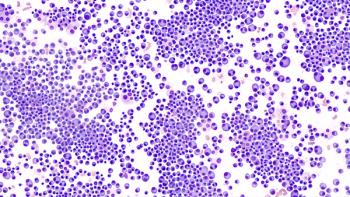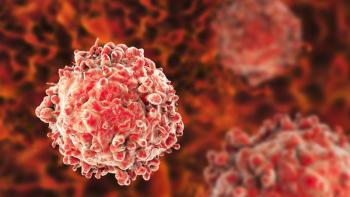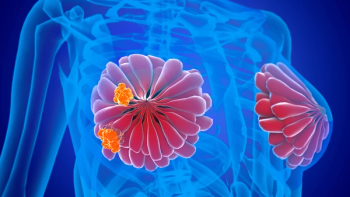
Targeted Therapies Extend OS in Stage IV ALK+ Lung Cancer Patients
Half of patients diagnosed with advanced non-small cell lung cancer were alive 6.8 years after diagnosis, according to new study findings.
Half of patients diagnosed with stage IV, ALK-positive non-small cell
Moreover, the researchers attributed this improvement to the introduction of targeted therapies. “(Our study) illustrates the benefit of targeted therapy and selecting therapy for a specific genetic makeup,” study author Jose Pacheco, MD, assistant professor, medicine/medical oncology, Colorado University School of Medicine, said in an interview with CURE®, a sister publication to Oncology Nursing News®.
The study included 110 patients who had been treated at UCHealth University of Colorado Hospital between 2009 and 2017. They were a median age of 53 years and 83% had never smoked.
All but 5 patients were initially treated with crizotinib (Xalkori), an
Patients who were diagnosed before 2010 typically received pemetrexed-based chemotherapy before receiving an ALK inhibitor, Pacheco explained, and whether this type of chemotherapy was given before or after an ALK inhibitor did not affect overall survival. However, the researchers found that patients who were on the pemetrexed-based therapy longer fared better, showing a 7% decrease in the risk for death with each additional month of the therapy.
“For ALK- and
The researchers also learned that the number of organs where the cancer had spread at the time of diagnosis worsened survival outcomes. Interestingly, brain metastases at the time of diagnosis did not predict shorter survival.
“Newer ALK inhibitors have very good responses in both the body and the brain, and sometimes responses in the brain with these newer medications can even be better than in the body,” Pacheco said. “Crizotinib works well in the body but it doesn’t get into the brain very well. In the past, brain metastasis did influence outcomes but now that we have medications that get into the brain and elicit antitumor response, we have seen that to not be the case anymore.” Patients are also followed closely with MRIs or surveillance scans every three to four months, he added.
“I think the biggest thing is that (patients) can live quite a long time and, in many cases, live a productive, enjoyable life on these treatments,” Pacheco said. “When people are newly diagnosed, they think they have a limited time to survive, which is not necessarily the case. They think they will have to get chemotherapy and that it will make them feel sick or lose their hair.”
“(What this study) illustrates is that if you’re diagnosed you should make sure (your health care team) is doing appropriate molecular testing, and if you have a particular molecular abnormality, make sure you get the appropriate therapy for that,” he added.
This article originally appeared on
Newsletter
Knowledge is power. Don’t miss the most recent breakthroughs in cancer care.
















































































